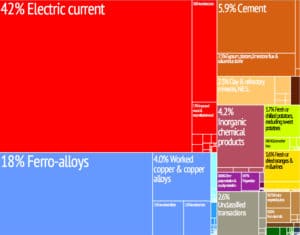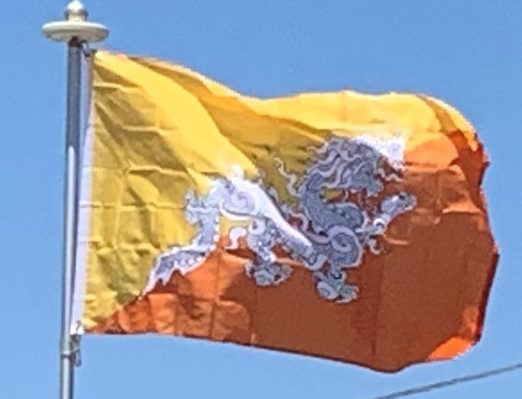In the south, the Shiwalik Hills are covered with dense Himalayan subtropical broadleaf forests, alluvial lowland river valleys, and mountains up to around 4,900 feet above sea level. The foothills descend into the subtropical Duars Plain. Most of the Duars is located in India, although a 6.2 to 9.3 mile wide strip extends into Bhutan. The Bhutan Duars is divided into two parts: the northern and the southern Duars.
The northern Duars, which abut the Himalayan foothills, have rugged, sloping terrain and dry, porous soil with dense vegetation and abundant wildlife. The southern Duars has moderately fertile soil, heavy savannah grass, dense, mixed jungle, and freshwater springs. Mountain rivers, fed by either the melting snow or the monsoon rains, empty into the Brahmaputra River in India.
Economy:
Bhutan’s economy is based on agriculture, forestry, tourism and the sale of hydroelectric power to India. Agriculture provides the main livelihood for 55.4 percent of the population. Agrarian practices consist largely of subsistence farming and animal husbandry. Handicrafts, particularly weaving and the manufacture of religious art for home altars, are a small cottage industry. A landscape that varies from hilly to ruggedly mountainous has made the building of roads and other infrastructure difficult and expensive.
This, and a lack of access to the sea, has meant that Bhutan has not been able to benefit from significant trading of its produce. Bhutan has no railways, though Indian Railways plans to link southern Bhutan to its vast network under an agreement signed in January 2005. Bhutan and India signed a ‘free trade’ accord in 2008, which additionally allowed Bhutanese imports and exports from third markets to transit India without tariffs. Bhutan had trade relations with the Tibet region until 1960, when it closed its border with China after an influx of refugees.

The industrial sector is in a nascent stage, and though most production comes from cottage industry, larger industries are being encouraged and some industries such as cement, steel, and ferroalloy have been set up. Most development projects, such as road construction, rely on Indian contract labour. Agricultural produce includes rice, chilies, dairy (some yak, mostly cow) products, buckwheat, barley, root crops, apples, and citrus and maize at lower elevations. Industries include cement, wood products, processed fruits, alcoholic beverages and calcium carbide.
Bhutan has seen recent growth in the technology sector, in areas such as green tech and consumer Internet/e-commerce. In May 2012, Thimphu TechPark launched in the capital and incubates start-ups via the Bhutan Innovation and Technology Centre (BITC).
Bhutan’s exports, principally electricity, cardamom, gypsum, timber, handicrafts, cement, fruit, precious stones and spices, total €128 million (2000 est.). Imports, however, amount to €164 million, leading to a trade deficit. Main items imported include fuel and lubricants, grain, machinery, vehicles, fabrics and rice. Bhutan’s main export partner is India, accounting for 58.6 percent of its export goods. Hong Kong (30.1 percent) and Bangladesh (7.3 percent) are the other two top export partners. As its border with Tibet is closed, trade between Bhutan and China is now almost non-existent. Bhutan’s import partners include India (74.5 percent), Japan (7.4 percent) and Sweden (3.2 percent).
Transportation:
Air:
Paro Airport is the only international airport in Bhutan. Yonphula Domestic Airport in Trashigang is a small domestic airport that underwent upgrades through 2010. National carrier Druk Air also operates flights between Paro Airport and airports in Jakar (Bumthang Dzongkhag) and Gelephu (Sarpang Dzongkhag) on a weekly basis. Druk Air connects internationally to: Delhi, Kathmandu, Dhaka, Singapore, and Bangkok. Additional destinations in India include: Siliguri, Gaya, and Guwahati.
